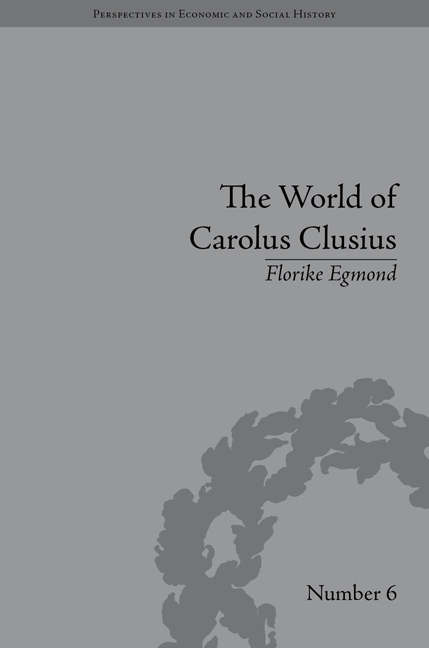Book contents
- Frontmatter
- CONTENTS
- Miscellaneous Frontmatter
- Preface
- Technical Note
- Abbreviations
- List of Figures
- Introduction
- I The Southern Netherlands
- II Habsburg Women
- III Italy
- IV France
- V Holland
- 9 Dutch Ports: Curiosity and the Exotic
- 10 Town and Gown: Leiden and the Convergence of European Cultural Traditions
- VI Beyond Place
- Conclusion
- Notes
- Works Cited
- Index
10 - Town and Gown: Leiden and the Convergence of European Cultural Traditions
from V - Holland
- Frontmatter
- CONTENTS
- Miscellaneous Frontmatter
- Preface
- Technical Note
- Abbreviations
- List of Figures
- Introduction
- I The Southern Netherlands
- II Habsburg Women
- III Italy
- IV France
- V Holland
- 9 Dutch Ports: Curiosity and the Exotic
- 10 Town and Gown: Leiden and the Convergence of European Cultural Traditions
- VI Beyond Place
- Conclusion
- Notes
- Works Cited
- Index
Summary
In Leiden too a remarkable cluster of plant experts, flower lovers and naturalia collectors emerged in the 1590s. Given the relative distance from the ports of Amsterdam and Middelburg, it is tempting to regard Leiden university as the principal motor of the interest in nature. But the university was only founded in 1575 – as a symbol of the independence of the new Dutch Republic – and the study of living nature there did not have a particularly quick start. In fact, no specific institutional interest seems to have been taken in natural history at all in Leiden university during at least the first decade of its existence. Medical botany was not taught there until 1587–8, and the botanical garden in Leiden – as a garden rather than as a project on paper – was created only in 1594, almost twenty years after the foundation of the university. To get to grips with natural history in Leiden in the 1590s and early 1600s, we therefore cannot limit ourselves to the academic sphere and certainly not to that of book learning or teaching from books, but have to look at people and practices in a wider, local, regional and even international context.
Creating the Hortus
After a complicated history of first selecting a suitable plot and then finding the right prefect for the garden - during which negotiations in 1591-2 with Paludanus and Dirck Cluyt (1546–98), an apothecary from Delft, came to nothing – Clusius was eventually (1593) appointed as prefect of the hortus, with the same Cluyt as his second in command.
- Type
- Chapter
- Information
- The World of Carolus ClusiusNatural History in the Making, 1550–1610, pp. 157 - 174Publisher: Pickering & ChattoFirst published in: 2014



